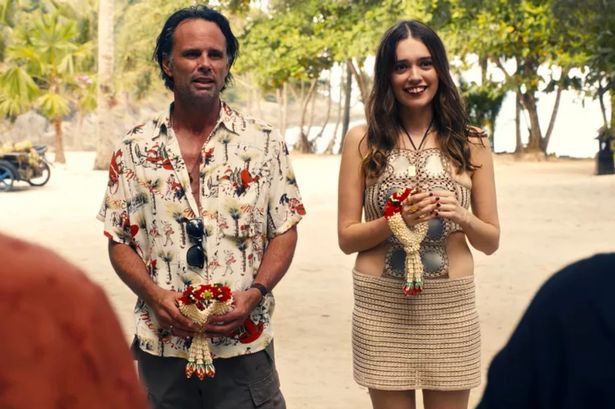Mike White’s HBO series The White Lotus has come to the end of its third season, with stars such as Walton Goggins and Aimee Lou Wood captivating audiences. But how realistic is it?
Season three of The White Lotus has come to a close.
Mike White’s HBO anthology series has had social media by the scruff of the neck since episode one. Bringing a host of new stars to a stunning destination resort in Thailand, White’s series explores the trials and tribulations of the world’s super-rich elite, whose troubles seem to follow them everywhere they go.
Experiencing a magical luxury resort and getting up-close-and-personal with the jet-setting members of high society makes for great TV, but that doesn’t mean it mirrors reality.
With the final season done and dusted, we spoke to Mark Caldicott, reservations specialist at Royal Westmoreland – a resort of luxury villas in Barbados – to find out where the White Lotus deviates from real life.
READ MORE: Inside White Lotus island as Mirror reveals dark side of resort targeted by Brit drug traffickers
1. The phone detox (Season 3)
One of the key plot points of season three has been the Thailand hotel’s no-phones policy, which annoyed certain guests from the Ratliff family from day one and was ignored entirely by others. While you’ll find specific digital detox resorts around the world, the vast majority of high-end resorts are all about giving their guests the autonomy and freedom to relax and unwind in the way they want.
Want to use your phone all day long? Go ahead! Want to lock it away in management’s private safe? We can help you out. Unless you’ve actually done your research (unlike dad Timothy Ratliff, played by Jason Isaacs) and are heading to a no-phone resort, you’ll find you’re free to use your phone at the world’s top holiday destinations.
2. Armond’s feud with Shane (Season 1)
Armond, the hotel manager from season one, was one of the series’ most unrealistic characters. His feud with Shane – which ultimately led to Armond’s untimely end – would never happen at a luxury resort. Mix-ups like the Pineapple Suite booking would be immediately resolved, usually with a generous compensation package, like spa treatments or even a future stay!
Much of Armond’s demeanour would never fly at a top resort. Managers are trained in their interactions with guests and are experts in conflict resolution, so any ill feeling from Shane would’ve been nipped in the bud and quickly resolved.
3. Hotel security
Another key plotline from season one was the relationship between Paula – holidaying with her friend Olivia and her family, the Mossbachers – and Kai, a native Hawaiian resort employee. Sympathising with Kai’s struggles about the loss of his ancestral land, Paula gives Kai the code to the Mossbachers’ safe and encourages him to steal their valuable jewellery in a heist that goes awry.
The idea that it would be this easy for staff members to access guest suites is laughable! Luxury resorts invest significantly in security measures to ensure their guests are safe at all times. Real luxury hotels monitor employee access to guest rooms with keycard tracking and would’ve known instantly that Kai was responsible.
In season three, security isn’t any better. After the hotel’s jewellery store is burgled, Gaitok, the resort security guard, is issued a gun by the resort manager due to rising fears of crime. The same security shortcomings are on show here, too – there are no safe gun ownership practices and the gun quickly goes missing.
Later, it was revealed that Russian staff member Valentin and his friend Aleksei, were involved in the resort robbery in episode one, in another high-level security breach. In reality, guests of luxury suites know that the resorts invest heavily in both internal and external security, making it as safe a place to holiday as possible.
4. The health plan (Season 3)
Another hotel policy that surprised guests at the start of season three was the introduction of personalised health plans, which were preceded by full physical testing to ensure the perfect health regime for each guest.
Having travelled around the world to reach the hotel, the guests were exhausted – and understandably weren’t too keen on undergoing a series of health tests! Although personalised health plans for guests are becoming more common, rest, relaxation and guest wellbeing will always come first, and the hotel staff should’ve known this. There’s nothing relaxing about health tests.
In a real luxury resort, you will find highly trained wellness staff who are expertly attuned to their guests’ needs. In reality, guests would be given as much time as they needed to settle in before undergoing any form of health test!
5. Belinda and Tanya’s relationship (Season 1)
Belinda, the Spa Manager played by Natasha Rothwell in season one, returns in season three. Her relationship with the erratic Tanya was a key plot point in season one, with Tanya promising to fund Belinda’s dream of founding her own wellness centre and Belinda becoming increasingly emotionally invested with Tanya’s promises.
In reality, luxury resort staff are trained to maintain professional boundaries with our guests. A real Spa Manager would not have entertained Tanya’s vague, fantastical offers and would have actually directed her to the proper business channels!

